
|
Aaron |
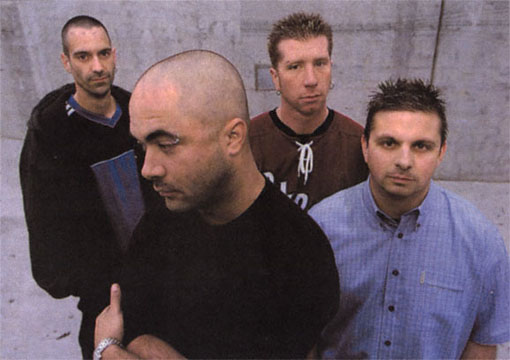
|
Mike |

|

|
Jon | Johnny |

|

|
Aaron |

|
Mike |

|

|
Jon | Johnny |

|
IN DEPTH
Aaron Lewis
Mike Mushok
Jon Wysocki
Johnny April

Mike and Jon met in early 1993 over beer at The Infinity, a live music bar in suburban Massachusetts. Sharing “inhibitions and aspirations,” the two talked about ambitions to form their own band. While Jon and Mike already knew each other somewhat, Aaron and Mike met at a friend’s annual Christmas party in 1993 in their hometown of Springfield, Massachusetts. “Hovering over a keg” when they met, Mike was doubtful that Aaron was really a singer, seeing that he had met so many others at parties who claimed to be singers. Mike’s initial reaction was, “You know how many people at parties have told me they’re singers?” At the time, however, Aaron had been doing acoustic gigs and was hoping to put a band together. Mike was also familiar with the local rock scene, but had grown tired of playing in bands that sounded like “two guys who solo a lot.” His approach to the guitar had recently changed after recently graduating from the University of Massachusetts with a degree in electrical engineering. “It went from being more frivolous, or overplaying quite a bit, to realizing, 'Let's just try and make good songs.'" They exchanged phone numbers, although Aaron didn’t have one. The conversation ended unexpectedly when, Mike recalls, “the drunken host smashed his head through a wall and kicked everyone out of the house.” Aaron called Mike three days later, but that would be the last they would hear from each other for ten months. Aaron went to Atlanta to attend a goldsmith school as back up plan to work at a jewelry business run by his mother’s family if music didn’t work out. While in Atlanta, his two friends Tim and Mitch turned him away from U2, Led Zeppelin, and James Taylor, in favor of Pantera and Sepultura, heavy metal he had previously ignored. When they met again in Springfield and jammed, by chance through a friend’s friend, Mike was blown away by Aaron’s vocal talent. Mike exclaimed to him, “Where have you been for fifteen years? I’ve been looking for you.” Jon later got a call from Mike who told him that he had finally found a singer. A quartet, now titled Staind, was formed in 1994 with a bassist Aaron knew who left the band before Johnny joined, and they got their first gig in February of 1995. Staind, with its present members Aaron, Mike, Jon, and Johnny was formed on November 24, 1995.
When the band first started in 1995, they
rehearsed in Mike’s parents’ basement. “It was free and it was
heated and we didn’t’ complain because we could get in there for four
hours a couple of times a week.” Sometimes meeting in bars, they
began writing their own material. At the time, however, Springfield
The band feels indebted to Springfield, their
hometown, which is also known as the “Staind 413 Core.” (The number
413 is Springfield’s area code.) Mike expresses, “We were never a
Boston band, we played Boston, but Boston was never really good to us.
We played a bunch of shows there and did okay, but Springfield is really
where we are from.
While performing, Mike also held a job as a temperature control engineer, which financially helped the band. By 1996, after a year and a half of steady gigs in Massachusetts, the band scraped together $2,500, enough to record their first album, Tormented. Staind put out Tormented on November 29, 1996 with a party that attracted over 900 people. Selling 200 CD’s that night, they continued their success over the next year, selling 4,000 of the now collector’s item debut album. (Their first album was recently re-released, now available only through www.stainddirect.com.) Not only did Staind build a good fan base in New England, they also received praise from local papers, such as the Lollipop which stated, “Unlike many a band, especially heavy bands that rely more on strength than dexterity, Staind has songs. Songs you get to know. Songs you move with, go the distance with. This is a band to watch.” The Northeast Performer also gave stunning reviews: “Staind’s musicianship is striking, and their live performances takes their recorded material one step further: pushing the envelope, ripping up the envelope, and then jumping up and down all over the envelope ‘til there ain’t a damn thing left."
Staind’s big break came on October 23, 1997 in a well-publicized and ten-thousand-times-told-too-many story. They “jumped at the chance,” says Mike, when their friends from the band Sugarmilk invited them to play a gig with Limp Bizkit, which was just starting its rise to national fame, at the Webster Theater in Hartford, Connecticut. “I guess it was 20 minutes before we were scheduled to go on when Fred burst through our dressing room door,” explains Mike about Fred Durst’s furious reaction to the gory Tormented CD cover, which graphically displays an upside-down crucified Barbie doll and a blood-smeared Bible with a knife piercing it. “Fred was so offended by the artwork on the cover that he came up to us and decided to have a huge confrontation.” Fred, who Mike considers a “spiritual guy,” was extremely offended. “He threw the CD across the room and tried to get us kicked off the bill. They hated us before we even played a note…I just explained the way it was. He said, ‘You guys are whack!’ and just yelled at us. I tried to get him to calm down and explained that it was supposed to depict this person who seemed normal going through a difficult time, but he had this place where he did all this whacked out stuff. That was supposed to be his room.” Fortunately, Fred was unsuccessful at kicking the band off the show. “We didn’t even know if we were, but our set time came and we went up and played.” Staind got to perform, while Aaron expresses about Fred Durst, “He freaked out. He immediately thought we were devil worshippers and tried to have us thrown off the show we were doing. It didn’t work and he stood side stage wanting to say, ‘I told you so,’ to someone. But it worked out in our favor because he had to sit side stage and listen to us and he liked us.”
“Liked” is definitely an understatement, as Fred told them after the show that they
were the best band he had seen in two years. He unequivocally told
Staind he wanted to help them get a major record deal, and at the time
Fred was working on forming his own production company. “He really
really liked the band, thought it was the best band he’d seen in a long
time, and wanted to work with us,” describes Mike. “I had already had
some letdowns in the music business, so I was like, ‘That’s cool,’ and
we exchanged numbers and talked. When we got in the van that night, I
was like, ‘You know, this is great, we’ll pursue it, but who knows.’”
Despite many disappointments in the past and going for weeks without any
communication from Fred, persistence paid off in the end.
As luck would have it, they barely made it
1,000 feet past the “Welcome to Florida” sign when their van broke down.
At 4:00 or 4:30 in the morning, at the ass-crack of
Despite severe criticism and deep hate for Limp Bizkit’s Fred Durst from some
Staind fans today, the band has no problems with its association with Fred Durst.
After all, if fate had played itself out differently, there might never
have the Staind that exists today. They continue to share a strong and
supportive relationship, and Fred continues to work with the band
directing various music videos. Fred took Staind under his protective
wings, much like what Korn had done for Limp Bizkit. Mike says, “Fred was
definitely kind of a mentor. He definitely helped in getting us gigs and
getting us on the road. And of course, you know, Fred played a role in
pushing us in the right direction -- helping us start out and, for sure,
got us a record deal.” However, since Fred first met Staind, Staind has
made a name for itself, and not simply by association with Limp Bizkit.
In the overall picture, Mike explains it well. “I have no problem being
associated with Limp Bizkit at all. They took us out on four tours, and
for a band to do that for another band, I have incredible respect for
them. But you also want to be known for who you are. I don’t think we’re
in the ‘shadow’ of Limp Bizkit. It’s similar to the way that Korn helped
out Orgy, and it just seems to be a really good trend in music that there
are bands out there that are
After doing two tours with Limp Bizkit, two more tours with Kid Rock, and one with Korn, in
addition to the Family Values Tour, Staind built a name for itself and
was not going to stop. Although opening for big name bands
Luck would be on Staind’s side again when “Outside” blasted incessantly onto the airwaves in late 2000, much to surprise of the band. Just as Staind’s successful emergence seemed to cool down, “Outside” was the number one song on the charts for seven straight weeks and brought real attention from all around the nation, finally putting the band onto mainstream radio. Once again, Staind’s monumental moment rests with the help of Fred Durst. When the 1999 Family Values Tour stopped in Biloxi, Mississippi on Halloween, Fred convinced Aaron to perform the unfinished acoustic song he had been working on even before they recorded their second album. Aaron agreed but with the condition that Fred had to do backup. “It was the best insurance policy I could have for something I was just winging,” tells Aaron. He did a pretty damn good job at making it up as he went along, as it was taped and added as a bonus track on the Family Values Tour 1999 album. Months later, while working on their third album, “Outside” got huge radio airplay from rock and pop stations alike. Aaron remembers, “Every twenty minutes it was on the radio. We were like, ‘What the fuck is going on?’”
With only an eight week hiatus in their
nonstop touring schedule, Staind proceeded to work on it’s multi-platinum
album, Break The Cycle. Barely seven days back at their
Springfield homes, Mike got the band to start putting things together. “I
was scared., he confesses. “I had a lot of ideas, but as a band we
hadn’t written or practiced in over a year and a half. Even though we
lived together the whole time, now we had to create. On the road, you
just have to play.” The band also felt
Break the Cycle, with high expectations
stemming from the hit single, “It’s Been Awhile,” released weeks before
its debut, came in at #1 on the Billboard Top 200 Albums Chart, thus
taking Staind out of small-time Rock/Metal and into Billboard's bigger
charts. Selling 716,000 copies in its first week, it was the second
highest debut this year. In two weeks it went platinum, within two months
it went double platinum, and it is now triple platinum. “I started
crying,” tells Mike. “It was amazing. I never thought that it would
happen. I could cry
“In my mind, says Mike, “I felt I didn’t want to go away as a band.
Because you see some bands go away for a long time – ‘Boy, we had some
- - - So what does it all come down to in the end? To put it short, Staind is four guys who consider themselves ordinary doing tremendous things, following their dreams with diligence and undaunted determination, with the help of a little luck, of course. It is and has always been all about the music. However, their demanding schedule and sudden fame have put pressure on the band, especially on Aaron. What about what's to come for the band? Aaron answers, “As far as the future, I have no idea.” What’s for certain, nonetheless, is that Staind has left a lasting impression on the music scene, and not because of its record sales, pioneering sound, or success story. Staind, with Aaron’s lyrics and the pain that surrounds the intense music that characterizes Staind’s distinctly original sound and message, in conjunction with the commitment of Mike, Jon, and Johnny, has reached into the darkest shadows of its deepest fans, something few people can claim to do. Staind will certainly survive whatever fate deals, as it already has overcome whatever it needed to go get where it is today. In the end, if Staind continues it keep it real and hopefully resist MTV (which is the inevitable death to ALL hard rock and metal bands) and the more-profitable mainstream culture, there’s no reason why the guys won’t be doing what they’ve always wanted – making real music. “We’re just normal people, no different than anybody else. Just got an opportunity to be in a band and get a record deal…pretty lucky actually,” confesses Aaron. “I guess this is what I’m supposed to do, or else I wouldn’t be here doing it. But who’d of thought. I just allow myself to get lost in what we’re doing, and I’m not really aware of what I am or am not doing on stage. I’m just lost in it all. I just try to be true to myself, and if everybody gets it, God bless them.” |
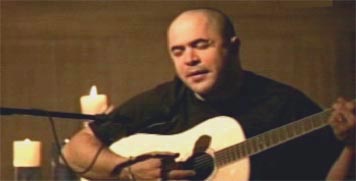
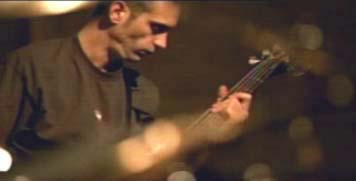
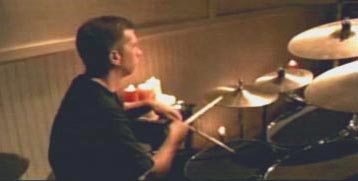
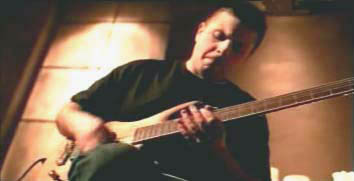
© 2002
www.staind-online.com
Reproduction of any kind is strictly prohibited without permission.
Main | News | Band | Music | Pictures | Videos | Articles | Tabs | Downloads | Stuff | TV | Tour | Links | Guestbook | Site Info